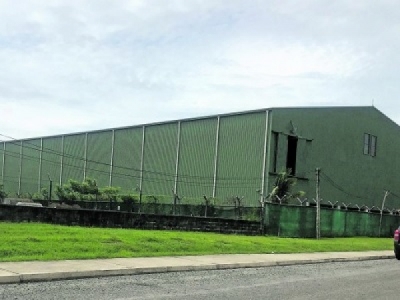
Posted on November 20, 2018
Amex Resources Limited’s Mba Delta Ironsands Project facility at the Lautoka Port is expected to open in early 2019.
The approval to dredge the navigational channel was finally given on Friday and work is expected to begin in the coming days.
An Environment Impact Assessment report was done on the impact of dredging in the area which is understood to have caused the delay.
The delay in the opening was because of there was no approval given to dredge the navigational channel.
Dredging is expected to take close to three months.
This would allow the big carrier ships to enter the new wharf built at the complex to load the ironsands concentrate which was a high-quality and low impurity magnetite product.
Most of the buildings at the Amex site are either complete or nearing completion.
The fleet of vessels that would be involved in extracting the ironsands from the mouth of the Ba River were already in place to begin work.
Chinese port developer CCCC First Harbour Consultants Co Ltd employees have been working under the scorching west heat to complete the project on time.
Financial Investment
Over $255 million had been invested in the project with a further $100m expected to be spent till the end of construction.
The company’s Mba Delta ironsands orebody occurs as a simple flat lying blanket of fine to coarse magnetite-bearing black sand, approximately 15 kilometres long by up to four kilometres wide. It is located on the tidal and sub-tidal flats of the delta.
This lies at the mouth of the Ba River and is bordered by a sparsely-populated agricultural area.
Physical development
Amex applied to the Mineral Resources Department for a prospecting licence in August 2008 and since then has proved up the orebody through numerous phases of exploration and development activities.
Amex’s ironsands concentrate is a high-quality and low impurity magnetite product. It can be readily extracted at low cost by dredging of unconsolidated sediments, without the expensive crushing and grinding required by hard rock magnetite sources.
The deposit lies in a shallow lagoon which has minimal current and wave activity. It is ideally suited to extraction by conventional dredging methods, planned at a rate of 12 million tonnes annually over the next 20 years.
From the dredge, the sand will be pumped to a nearby barge-mounted process plant along a 500m long floating pipeline.
Simple chemical-free magnetic separation at the process plant will recover the magnetite concentrate, and a fleet of up to four barges and a pusher tug will carry the product daily to the company’s sole-use facilities nearby at Lautoka Port.
The host sand will be rehabilitated immediately to the delta floor.
Source: FIJI Sun online





